Grow Cucumbers Indoors Easily? Absolutely! Imagine biting into a crisp, refreshing cucumber you nurtured from seed, right in your own home, even when the snow is falling outside. Sounds like a dream, right? Well, it’s a dream within reach, and I’m here to show you how!
For centuries, humans have cultivated plants indoors, from the elaborate orangeries of European royalty to the humble windowsill herb gardens of today. This connection to nature, brought inside, nourishes not only our bodies but also our souls. But let’s be honest, sometimes growing things can feel a little intimidating, especially when you’re trying to coax a summer vegetable like a cucumber to thrive indoors.
That’s where these DIY tricks and hacks come in. Maybe you’re short on outdoor space, live in an apartment, or simply want to enjoy fresh cucumbers year-round. Whatever your reason, learning how to grow cucumbers indoors easily is a game-changer. It’s not just about having fresh produce at your fingertips; it’s about the satisfaction of nurturing life, the joy of watching something grow, and the pride of saying, “I did that!” So, ditch the grocery store cucumbers and get ready to embark on a rewarding gardening adventure. I’m excited to share my favorite tips and tricks to help you succeed!
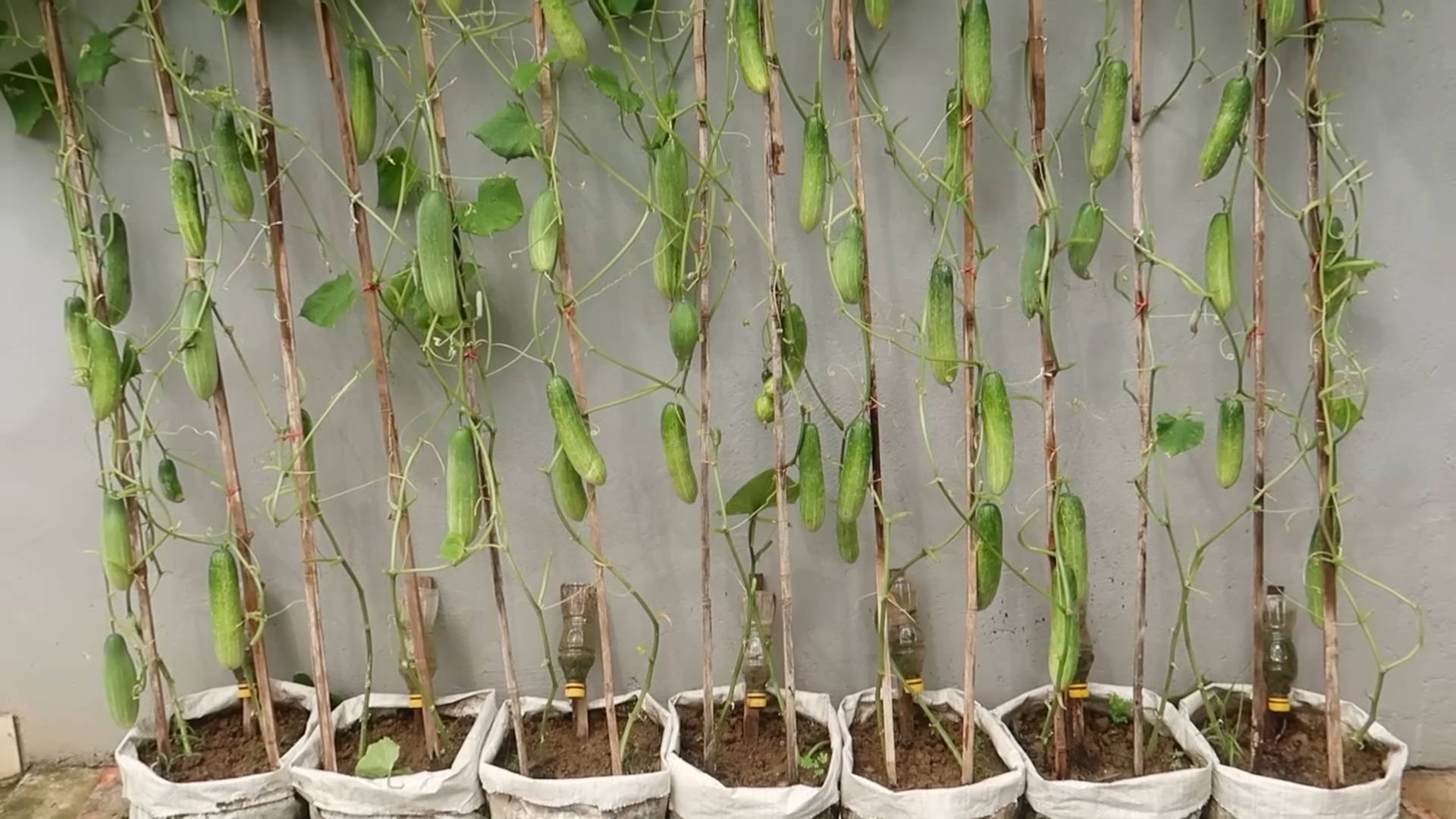
Growing Cucumbers Indoors: A Beginner’s Guide
Okay, so you want to grow cucumbers indoors? Awesome! It’s totally doable, and honestly, there’s nothing quite like biting into a fresh, homegrown cucumber, especially when it’s the middle of winter. I’ve done it myself, and while it takes a little planning and effort, the reward is absolutely worth it. Let’s dive into how you can get your own indoor cucumber garden going.
Choosing the Right Cucumber Variety
First things first, not all cucumbers are created equal, especially when it comes to indoor growing. You’ll want to choose a variety that’s specifically bred for smaller spaces and doesn’t require pollination. Here are a few of my favorites:
* Bush Champion: These are compact and produce a good yield.
* Spacemaster: As the name suggests, they’re perfect for limited space.
* Patio Snacker: These are super productive and have a great flavor.
* Little Leaf: Another compact variety that’s well-suited for containers.
* English Cucumbers (like ‘Telegraph’ or ‘Sweet Success’): These are parthenocarpic, meaning they don’t need pollination to produce fruit. This is a HUGE advantage indoors!
Gathering Your Supplies
Before you even think about planting, you need to make sure you have everything you need. Trust me, it’s way easier to gather everything beforehand than to run to the store mid-planting. Here’s your checklist:
* Cucumber Seeds: Obviously! Choose your variety wisely.
* Large Containers: At least 5-gallon containers per plant. Cucumbers need room for their roots to spread.
* Potting Mix: Use a high-quality potting mix that drains well. Avoid garden soil, as it can compact too much in containers.
* Grow Lights: Cucumbers need a LOT of light. Unless you have a super sunny south-facing window, you’ll need grow lights.
* Trellis or Support System: Most cucumber varieties are vining and need something to climb on.
* Watering Can or Hose: For, well, watering!
* Fertilizer: A balanced liquid fertilizer is best.
* Spray Bottle: For misting the leaves.
* Seed Starting Tray (Optional): If you want to start your seeds indoors before transplanting.
Step-by-Step Planting Guide
Okay, now for the fun part! Let’s get those cucumber seeds in the ground (or potting mix, rather).
1. Starting Seeds (Optional): I usually start my cucumber seeds indoors about 3-4 weeks before I want to transplant them. This gives them a head start. To do this, fill your seed starting tray with potting mix, make a small indentation (about 1/2 inch deep), and drop in one or two seeds per cell. Cover lightly with soil and water gently. Keep the soil moist and warm (around 70-75°F). You can use a heat mat to help with germination.
2. Direct Sowing (Alternative): If you prefer, you can skip the seed starting tray and sow the seeds directly into your large containers. Follow the same instructions as above, planting the seeds about 1/2 inch deep.
3. Choosing Your Container: Make sure your container has drainage holes! Cucumbers hate sitting in soggy soil. Fill the container with your high-quality potting mix, leaving about an inch or two of space at the top.
4. Planting the Seedlings (If Starting Seeds): Once your seedlings have a few true leaves (the leaves that appear after the initial seed leaves), they’re ready to be transplanted. Gently remove the seedlings from the seed starting tray, being careful not to damage the roots. Plant one seedling per container.
5. Watering: Water thoroughly after planting, making sure the soil is evenly moist. Don’t overwater! You want the soil to be moist, not soggy.
6. Setting Up Your Grow Lights: Position your grow lights about 6-12 inches above the plants. You’ll need to adjust the height as the plants grow. Cucumbers need about 12-16 hours of light per day.
7. Installing the Trellis: Install your trellis or support system as soon as possible. This will give the cucumber vines something to climb on as they grow. You can use a bamboo stake, a tomato cage, or a more elaborate trellis system.
8. Fertilizing: Start fertilizing your cucumber plants about two weeks after planting. Use a balanced liquid fertilizer, following the instructions on the label. I usually fertilize every 2-3 weeks.
Caring for Your Indoor Cucumber Plants
Now that your cucumbers are planted, it’s time to take care of them. Here’s what you need to do to keep them happy and healthy:
* Watering: Cucumbers need consistent moisture, but they don’t like to be waterlogged. Water deeply when the top inch of soil feels dry to the touch. Avoid getting water on the leaves, as this can lead to fungal diseases.
* Lighting: Make sure your cucumbers are getting enough light. If you’re using grow lights, keep them on for 12-16 hours per day. If you’re relying on natural light, supplement with grow lights as needed.
* Temperature: Cucumbers prefer temperatures between 70-80°F during the day and 60-70°F at night.
* Humidity: Cucumbers like humidity. You can increase the humidity around your plants by misting them with a spray bottle or by placing a tray of water near them.
* Pruning: Pruning can help improve air circulation and encourage fruit production. Remove any yellowing or dead leaves. You can also prune the side shoots (the small branches that grow from the main stem) to encourage the plant to focus its energy on producing fruit.
* Pollination (If Necessary): If you’re growing a cucumber variety that requires pollination, you’ll need to hand-pollinate the flowers. This is easy to do. Simply use a small paintbrush to transfer pollen from the male flowers to the female flowers. The male flowers have a long, thin stem, while the female flowers have a small cucumber-like structure behind the flower.
* Pest Control: Keep an eye out for pests like aphids, spider mites, and whiteflies. If you see any pests, you can try spraying them with insecticidal soap or neem oil.
Harvesting Your Cucumbers
The best part! You’ll know your cucumbers are ready to harvest when they reach the desired size and color for your chosen variety. Gently twist or cut the cucumber from the vine, being careful not to damage the plant.
* Regular Harvesting: Harvest regularly to encourage the plant to produce more fruit. Overripe cucumbers can become bitter.
* Enjoy Your Harvest: Eat them fresh, pickle them, add them to salads – the possibilities are endless!
Troubleshooting Common Problems
Even with the best care, you might encounter some problems along the way. Here are a few common issues and how to fix them:
* Yellowing Leaves: This could be caused by overwatering, underwatering, nutrient deficiencies, or pests. Check the soil moisture, fertilize if needed, and inspect for pests.
* Lack of Fruit: This could be caused by insufficient light, lack of pollination, or nutrient deficiencies. Make sure your plants are getting enough light, hand-pollinate if necessary, and fertilize regularly.
* Powdery Mildew: This is a fungal disease that can cause white, powdery spots on the leaves. Improve air circulation, avoid getting water on the leaves, and spray with a fungicide if necessary.
* Pests: As mentioned earlier, keep an eye out for pests and treat them promptly.
Extra Tips for Success
* Rotate Your Crops: If you’re growing cucumbers in the same containers year after year, consider rotating your crops to prevent soilborne diseases.
* Use Companion Planting: Plant basil or marigolds near your cucumbers to help repel pests.
* Keep a Journal: Keep track of your planting dates, watering schedule, fertilizing schedule, and any problems you encounter. This will help you learn from your mistakes and improve your success next time.
* Don’t Give Up: Growing cucumbers indoors can be challenging, but it’s also incredibly rewarding. Don’t get discouraged if you encounter problems along the way. Just keep learning and experimenting, and you’ll eventually get the hang of it.
Growing cucumbers indoors is a fun and rewarding experience. With a little planning and effort, you can enjoy fresh, homegrown cucumbers all year round. Good luck, and happy gardening!
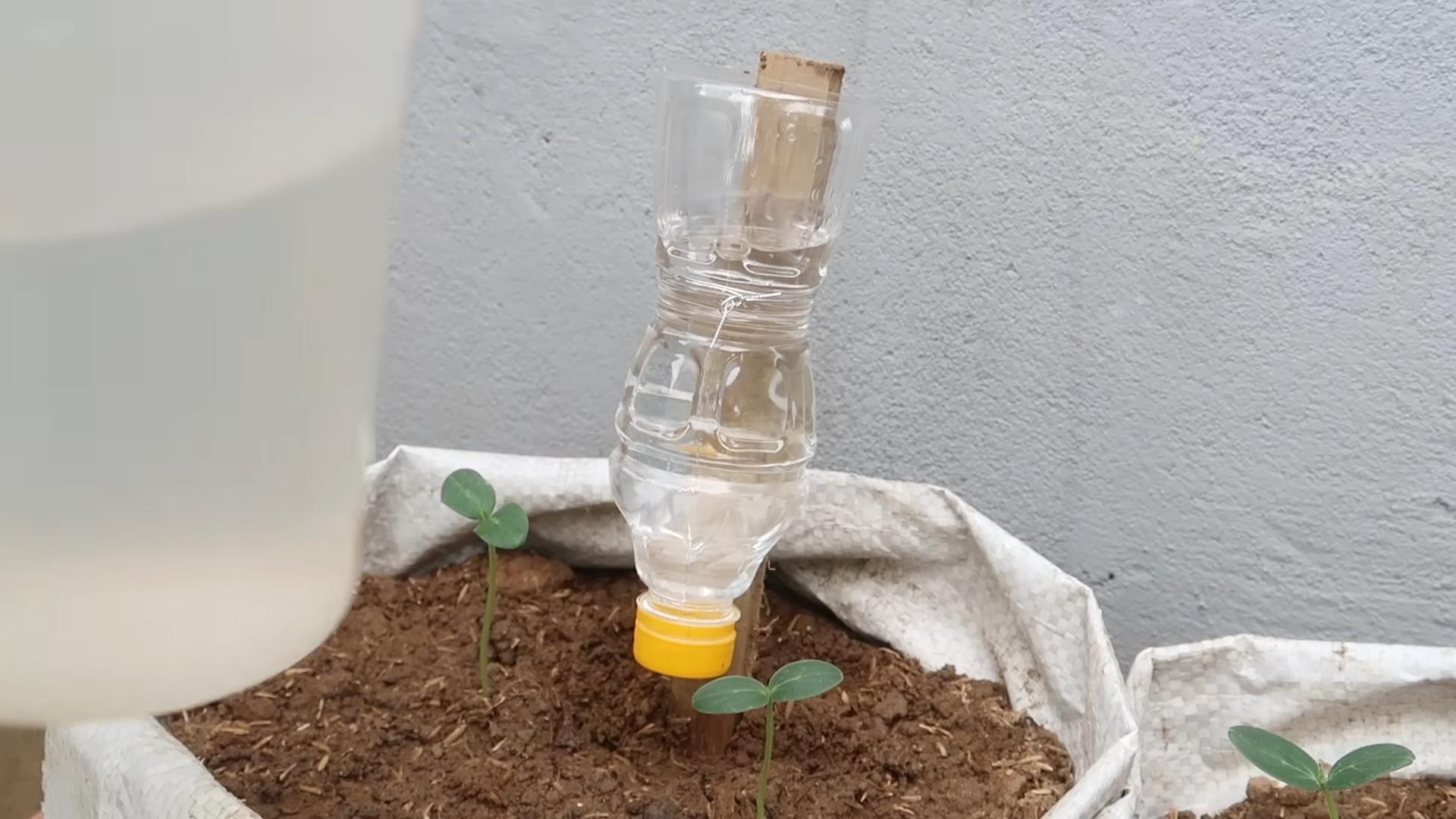
Conclusion
So, there you have it! Growing cucumbers indoors might seem like a daunting task, but with these simple steps and a little bit of patience, you can enjoy fresh, crisp cucumbers straight from your home, regardless of the season. This DIY approach to cucumber cultivation is a must-try for several compelling reasons.
Firstly, it offers unparalleled control over your growing environment. You dictate the temperature, humidity, and light exposure, shielding your precious plants from unpredictable weather patterns, pesky pests, and diseases that often plague outdoor gardens. This level of control translates to healthier plants and a more abundant harvest.
Secondly, it’s incredibly rewarding. There’s something deeply satisfying about nurturing a plant from seed to fruit, especially when that fruit is a delicious cucumber that you can proudly serve to your family and friends. Imagine the conversations sparked by the fact that you grew those cucumbers yourself!
Thirdly, it’s a fantastic way to extend your growing season. No longer are you limited by the constraints of summer. With indoor cultivation, you can enjoy fresh cucumbers year-round, adding a vibrant touch to your salads, sandwiches, and snacks, even in the dead of winter.
But the beauty of this DIY project lies not only in its practicality but also in its adaptability. Feel free to experiment with different cucumber varieties. Bush varieties, like Spacemaster or Bush Champion, are particularly well-suited for container gardening due to their compact size. You can also explore different trellising methods to maximize space and support your growing vines. Consider using a vertical trellis made from netting or bamboo stakes, or even a simple tomato cage.
For those looking to add a touch of flair, try growing your cucumbers in decorative pots that complement your home décor. You can even incorporate companion plants, such as basil or marigolds, to deter pests and enhance the overall health of your cucumber plants.
Don’t be afraid to tweak the watering schedule based on your specific environment and the needs of your plants. Remember to monitor the moisture levels in the soil regularly and adjust accordingly.
Ultimately, the success of your indoor cucumber garden hinges on your willingness to experiment and learn. So, embrace the challenge, get your hands dirty, and embark on this exciting journey of indoor cucumber cultivation.
We are confident that you will find this DIY trick to grow cucumbers indoors easily both enjoyable and rewarding. We encourage you to give it a try and share your experiences with us! Let us know what varieties you choose, what challenges you encounter, and what successes you celebrate. Your feedback will not only help us improve this guide but also inspire other gardeners to embark on their own indoor cucumber adventures. Share your photos and stories in the comments section below – we can’t wait to see your thriving indoor cucumber gardens!
Frequently Asked Questions (FAQ)
What kind of light do indoor cucumbers need?
Cucumbers are sun-loving plants and require at least 6-8 hours of direct sunlight per day. If you don’t have a south-facing window that provides sufficient sunlight, you’ll need to supplement with artificial grow lights. LED grow lights are a great option as they are energy-efficient and provide the full spectrum of light that cucumbers need to thrive. Position the grow lights a few inches above the plants and adjust as they grow taller. Remember to rotate your plants regularly to ensure even light exposure on all sides.
What is the best soil for growing cucumbers indoors?
The best soil for growing cucumbers indoors is a well-draining potting mix that is rich in organic matter. Avoid using garden soil, as it can be too heavy and may contain pests or diseases. A good potting mix will provide adequate drainage, aeration, and nutrients for your cucumber plants. You can also amend your potting mix with compost or other organic materials to further improve its fertility. Look for a potting mix specifically formulated for vegetables or one that contains peat moss, perlite, and vermiculite.
How often should I water my indoor cucumber plants?
Water your indoor cucumber plants regularly, keeping the soil consistently moist but not waterlogged. The frequency of watering will depend on factors such as the size of your pot, the temperature and humidity of your environment, and the growth stage of your plants. A good rule of thumb is to water when the top inch of soil feels dry to the touch. When watering, water deeply until water drains out of the bottom of the pot. Avoid overhead watering, as this can promote fungal diseases.
How do I pollinate my indoor cucumber plants?
Cucumbers are typically pollinated by bees, but since you’re growing them indoors, you’ll need to hand-pollinate them. This is a simple process that involves transferring pollen from the male flowers to the female flowers. Male flowers have a long, thin stem, while female flowers have a small cucumber-like fruit at the base. Use a small paintbrush or cotton swab to collect pollen from the male flowers and gently brush it onto the stigma of the female flowers. You can also remove a male flower and gently rub the stamen onto the stigma of the female flower. Repeat this process every day until the female flowers start to develop into cucumbers.
What are some common pests and diseases that affect indoor cucumbers?
Common pests that can affect indoor cucumbers include aphids, spider mites, and whiteflies. These pests can suck the sap from your plants, causing them to weaken and become susceptible to diseases. Regularly inspect your plants for signs of pests and take action immediately if you find any. You can use insecticidal soap or neem oil to control these pests. Common diseases that can affect indoor cucumbers include powdery mildew and fungal diseases. These diseases can cause white or gray patches on the leaves and can eventually kill your plants. To prevent these diseases, ensure good air circulation around your plants and avoid overhead watering. If you notice any signs of disease, remove the affected leaves and treat your plants with a fungicide.
How long does it take for cucumbers to grow indoors?
The time it takes for cucumbers to grow indoors depends on the variety of cucumber you are growing and the growing conditions. Generally, it takes about 50-70 days from planting to harvest. Some faster-maturing varieties may be ready to harvest in as little as 45 days. Provide your plants with optimal growing conditions, including plenty of sunlight, water, and nutrients, to ensure a faster and more abundant harvest.
Can I grow cucumbers indoors in winter?
Yes, you can absolutely grow cucumbers indoors in winter! In fact, that’s one of the biggest advantages of indoor gardening. The key is to provide your plants with the right conditions, including adequate light, warmth, and humidity. Use grow lights to supplement natural sunlight, maintain a consistent temperature of around 70-80°F, and increase humidity by misting your plants regularly or using a humidifier. With proper care, you can enjoy fresh cucumbers all winter long.
What size pot do I need for growing cucumbers indoors?
Choose a pot that is at least 5 gallons in size for growing cucumbers indoors. A larger pot will provide more room for the roots to grow and will help to prevent the plant from becoming root-bound. Make sure the pot has drainage holes to allow excess water to drain out. You can also use a self-watering pot to help maintain consistent moisture levels in the soil.
How do I fertilize my indoor cucumber plants?
Fertilize your indoor cucumber plants regularly with a balanced fertilizer that is specifically formulated for vegetables. Start fertilizing when the plants are about 6 inches tall and continue fertilizing every 2-3 weeks throughout the growing season. Follow the instructions on the fertilizer label for proper application rates. You can also use a liquid fertilizer diluted in water to feed your plants. Avoid over-fertilizing, as this can damage the roots and stunt the growth of your plants.
What are the best cucumber varieties to grow indoors?
Some of the best cucumber varieties to grow indoors include bush varieties like Spacemaster, Bush Champion, and Salad Bush. These varieties are compact and well-suited for container gardening. Other good options include parthenocarpic varieties like Diva and Sweet Success, which don’t require pollination to produce fruit. These varieties are ideal for indoor growing, as you don’t have to worry about hand-pollinating them.


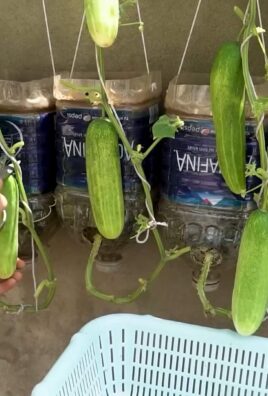
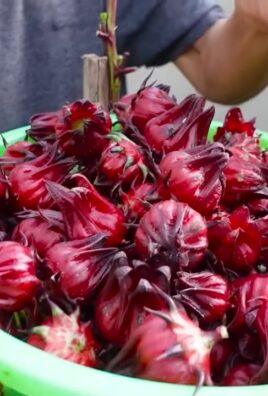
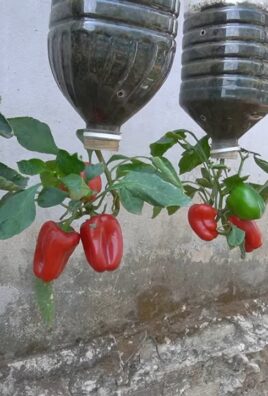
Leave a Comment